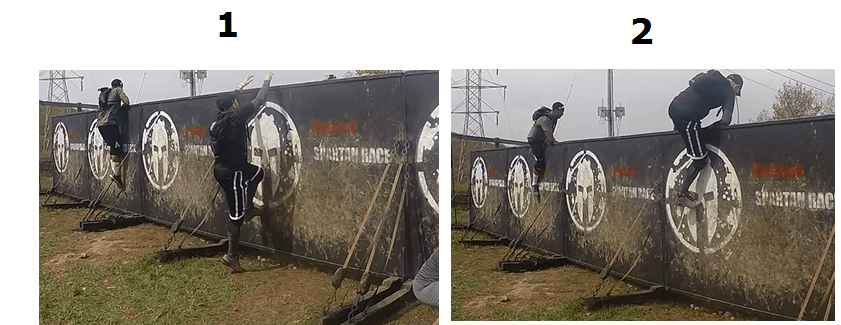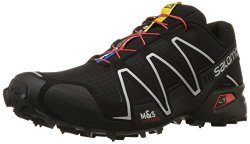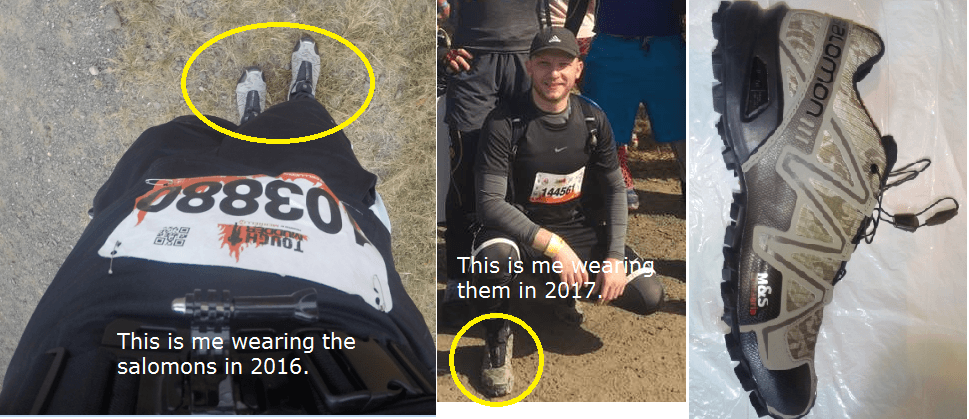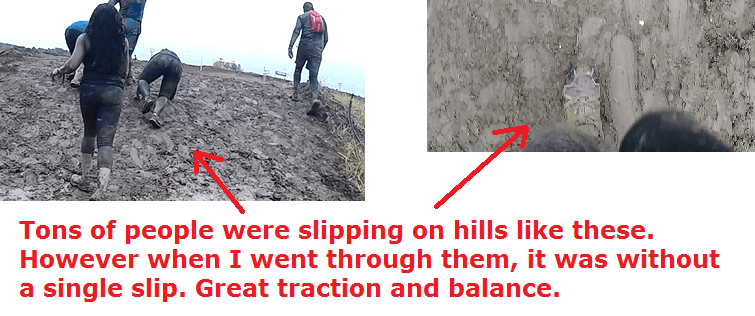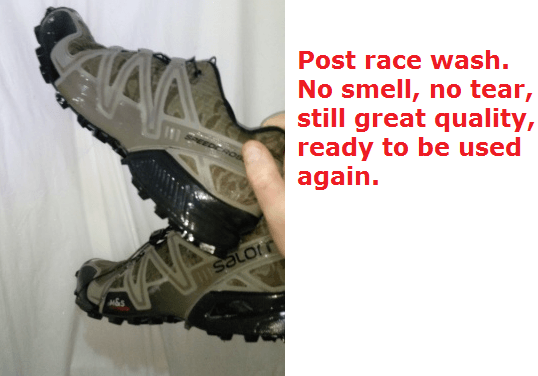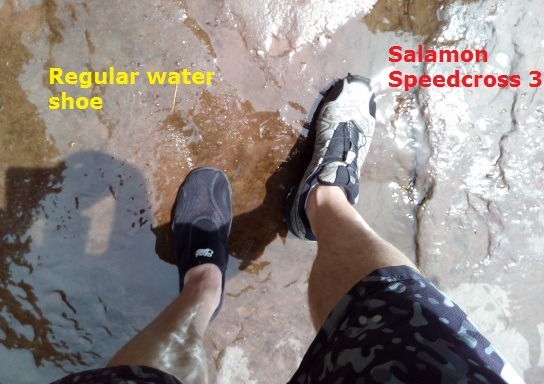Battlefrog is a mud run, but it is not a typical one. For one, it has a unique list of obstacles that are very challenging.
And also that it is the one type of race where it’s shortest course is 8 kilometers, vs the usual 5k’s you find and that it’s more advanced version is basically a loop of the same race over and over.
If you plan on running this course, you’ll want to memorize the following list of obstacles on it and make sure your body and muscles are all ready for it!
News: Battlefrog has shut down all of it’s events for the remainder of 2016 and possibly 2017.
If you are looking for events that are like this, try checking out this list of different mud runs that can challenge you.
3 walls: On the first wall, you have to hop over it, on the second, you crawl or roll under it and finally on the third, there is a hole in the wall and you jump through it.
Usually on other mud runs such as the Spartan Race and the Survival Race, you will see these same kinds of walls, but in Battlefrog, these 3 are part of 1 obstacle.
Mounds of grounds: In this area of the race, you are going through dirty water and semi circular dirt mounds that are very slippery. In many mud runs, this is also a common thing to see, but here, sometimes because they are shaped a little bit more circular, the slope is more vertical when climbing, making it very difficult. If you wear shoes with good traction, it’ll be easier. Also practice hiking up steep slopes to improve leg resilience.
Tip of the spear: This is one of the unique obstacles on Battlefrog!
There are 3 walls here that are diagonally slanted and you have to maneuver on the side of them using ropes on one wall, hanging onto wood on the other and the same kinds of ropes on the third. To complete the course, when you end on the third wall, you ring a bell.
The rope parts are easy and you don’t actually have to climb since the wall is slanted but it’s the second wall where you have to hang onto the wood that makes things very challenging.
Being in an angled position where your legs are bent helps keep the pressure of them. Grip however is going to be a problem, especially on the wooden part, so practice it or use gloves for increased control when you’re on this challenge.
Also because your legs can also get very tired or slip on this obstacle, try to get shoes that have decent traction that help save your energy and avoid slipping.
Inverted Wall: You climb up the bent side of a wall and cross over the other side. It’s very common on the Spartan Race
Rope Climb: Only the most difficult mud runs have rope climbing, but on Battlefrog (and on the Spartan Race), you usually climb the rope over water.
A large wall you climb using a rope: You vertically go up a wall with the help of a rope. There are 2 pieces of wood on it that help your feet, or hands hold onto it so you can complete it, but when you get to the top, you will use another rope and pieces of wood to climb down, just on the other side.
Carrying a very heavy bag. They call this the “Wreck Bag Carry”. It maybe a sand bag, but it’s still going to be very heavy and usually they’ll have you carry these over muddy areas.
Slant Wall: Another large wall that is also slanted, but there are not ropes or pieces of wood to help you get above it, you have to depend on getting a good run and jump to reach the top. There are ways to get above this obstacle and it’s actually easier on this race because the wall is slanted, not straight up like in many other mud runs.
The Platinum Rig: This may be the most difficult upper body obstacle in Battlefrog. You have to use your hands to cross monkey bars, rings, wooden and metal poles while being above ground.
This obstacle will activate different parts of your upper body and keep you uncomfortable because once you cross one part, say the monkey bars, it goes into the rings which you have to swing through, then the metal poles which are also extremely difficult. I have seen one of these in Battlefrog have rings on your foot level that you can use to prolong your grip stamina.
Delta Ladder: I have seen this on the Spartan Race but I think this one is either more slanted. Basically it’s a very tall wooden “ladder” where each part of it is far apart which means you can’t climb it quickly unless you first get a good grip with your hands on the next part of the ladder, stand up, then use your legs to climb up to the next part before reaching up with your hands to get the next one, then after you get to the top, guess what, the only way down is to do the same thing, but rely on your feet to reach to the lower parts of the wood, before using your hands to bring your body down.
A regular tire flip. Well the tire is gigantic so flipping it can get difficult. It is important to get into a squat position before tossing it.
Normandy Jacks: This may have been taken from the popular pictures and movie scenes of the invasion of Normandy where you had large metal “jacks” along the shore as soldiers flooded in, but on Battlefrog, you cross these jacks while being under barb wire and mud.
Large Ladder: This is a completely vertical, wooden ladder that is pretty easy to climb vs the delta one. It is much shorter and easier to maintain a grip. But there may also be a few of these in this obstacle.
60 degree obstacle: It is basically the slanted wall, but it’s made of horizontal wooden poles you use to climb over. This one may be harder than the slanted wall because there are less areas to hold onto with your legs and it’s easier to fall.
Jerry Can Carry: I think the “can” is a pun because like the sandbag carry challenge, here you carry what look like plastic gasoline tanks, but they are filled up and very heavy. You may have to drag them over mud.
Crossing over wooden blocks in the ground: They maybe of different height making it hard for you to maintain a good balance.
2 large pieces of wood, you climb over one then jump onto the other which is higher of the ground and the goal is to swing over. This is actually a scary one because it’s very easy to miss your jump, slip backwards or if you jump over too much, you can flip over and fall too quickly.
It’s better if you first reach out and touch the other wood you’re aiming to jump to and time the jump so that when you hit it, your waist is what goes around it and acts as a balance and your upper body is over one part while your legs are over the other.
If this challenge is too difficult or too scary, you may be able to get away with using the parts on the side that keep this obstacle together and walk over them and onto the other piece of wood.
A very skinny caving ladder that you hover under and cross while being over water. If they don’t have this, it may be replace with a rope instead. You may also find a different version of this obstacle where you have to climb up it to ring a bell. Keep in mind these things are not your typical ladder. You may spin around and feel very little control while trying to control it.
There are a few other obstacles on Battlefrog but these are very common on the course. You should prepare for them by doing these exercises and maybe beginning with an 8k or a lower level mud run if you’re not ready.
Any good alternative mud runs to Battlefrog since it’s been shut down?
I would say 3:
1) Bone frog. This is probably the CLOSEST mud run you’ll find to Battlefrog which is still up.
2) Spartan Races. Probably anything Super and higher (Beast and Ultra Beast).
3) Full Tough Mudder race. 10 miles+ and it also has team oriented obstacle courses, which is REALLY fun.


